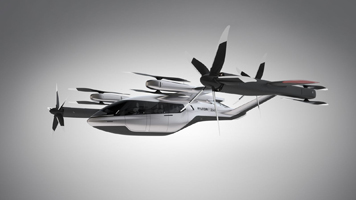Korea plans Urban Air Mobility by 2025
- July 23, 2020
- William Payne

The South Korean Government is planning on launching urban air mobility services within the metropolitan Seoul area by 2025. The Ministry of Land, Infrastructure and Transport (MOLIT) is working with local companies and Hyundai Motor Group to commercialise new UAM services within five years. A new law will be passed to accelerate commercialisation of UAM services, allowing South Korea to establish a lead over other countries’ efforts.
The new Korean urban air mobility system has been named K-UAM.
The government envisages that the UAM industry could be worth $600 billion by 2040. It wants the country to become a major global player in what it perceives as a significant growth industry. American, European and Chinese firms are currently developing UAM vehicles.
The ministry envisages one or two urban air mobility terminals in Seoul by 2025. It intends to increase the number of terminals to ten by 2030.
To succeed in commercialising urban air mobility services by 2025, South Korea would need not only to legalise and regulate urban air vehicles, it would also need an infrastructure adapted to the new services. This would include new charging technologies, flight navigation systems, and a network of take-off and landing fields, with potential back-up landing strips in case of emergency.
South Korea sees UAM services as a response to worsening traffic conditions in Seoul and other cities in the country.
At a conference to discuss the new policy, South Korea’s finance minister, Hong Nam-ki, said that the government would propose transportation licences, create an insurance scheme, and devise a profit sharing system. An enabling law would allow the implementation of the government’s strategies.
The government’s roadmap includes the commercialisation of drone taxis by 2025, and of autonomous passenger air vehicles by 2035. Drones developed for freight services will be modified for transporting passengers in the early stages of the programme, to accelerate commercialisation of the new technologies.
The government plans to have a one-seater passenger air vehicle by 2023, and operating standards completed by 2024. Pilots will fly the passenger air vehicles for around ten years after the start of the new standards, with passenger air services planned to become fully autonomous in 2035.




